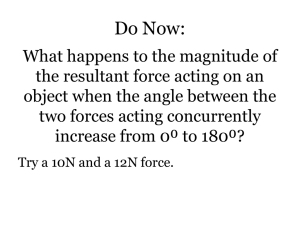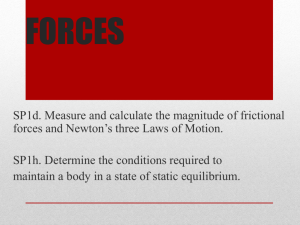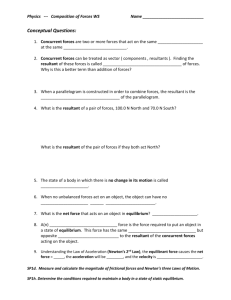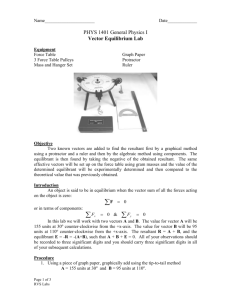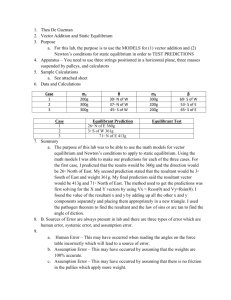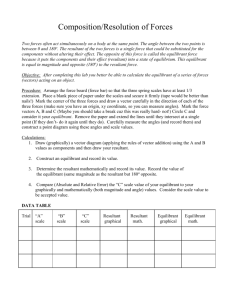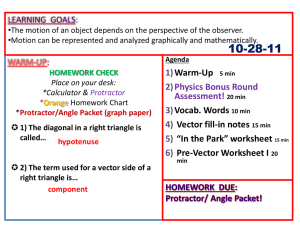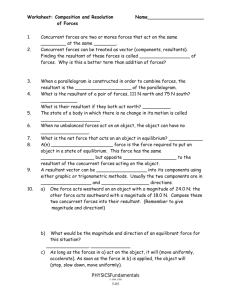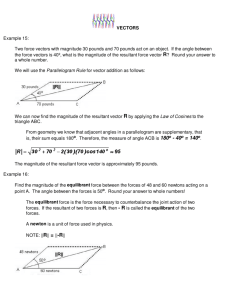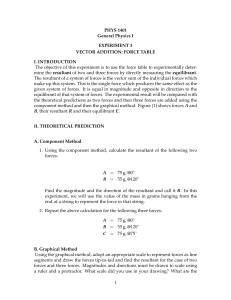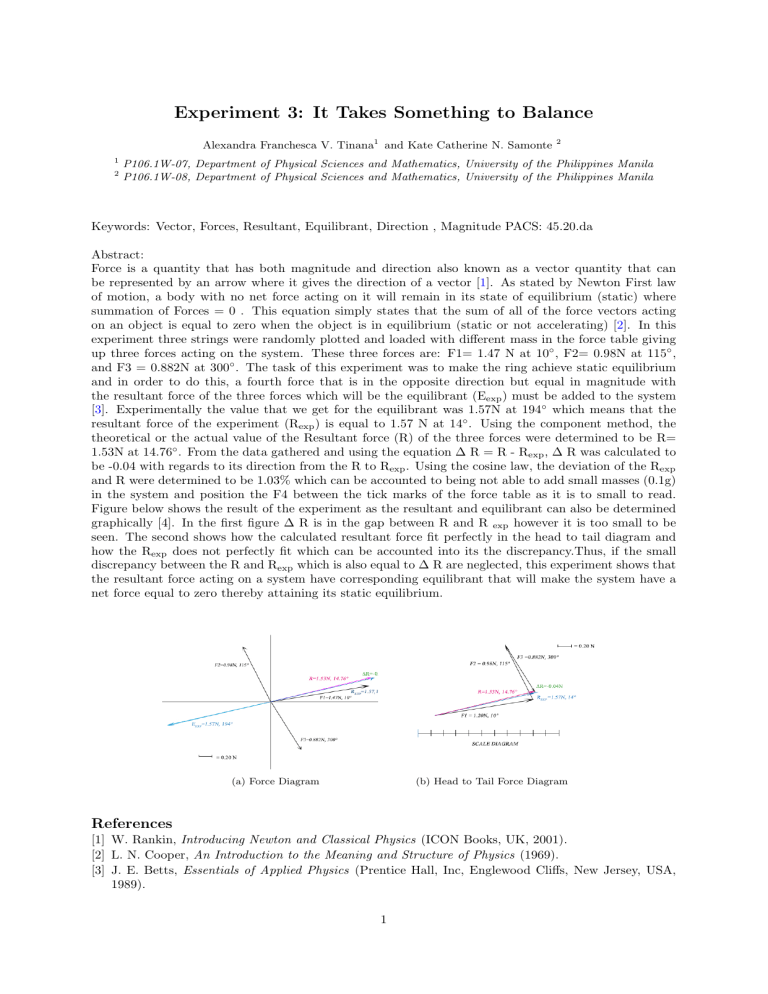
Experiment 3: It Takes Something to Balance Alexandra Franchesca V. Tinana1 and Kate Catherine N. Samonte 1 2 2 P106.1W-07, Department of Physical Sciences and Mathematics, University of the Philippines Manila P106.1W-08, Department of Physical Sciences and Mathematics, University of the Philippines Manila Keywords: Vector, Forces, Resultant, Equilibrant, Direction , Magnitude PACS: 45.20.da Abstract: Force is a quantity that has both magnitude and direction also known as a vector quantity that can be represented by an arrow where it gives the direction of a vector [1]. As stated by Newton First law of motion, a body with no net force acting on it will remain in its state of equilibrium (static) where summation of Forces = 0 . This equation simply states that the sum of all of the force vectors acting on an object is equal to zero when the object is in equilibrium (static or not accelerating) [2]. In this experiment three strings were randomly plotted and loaded with different mass in the force table giving up three forces acting on the system. These three forces are: F1= 1.47 N at 10◦ , F2= 0.98N at 115◦ , and F3 = 0.882N at 300◦ . The task of this experiment was to make the ring achieve static equilibrium and in order to do this, a fourth force that is in the opposite direction but equal in magnitude with the resultant force of the three forces which will be the equilibrant (Eexp ) must be added to the system [3]. Experimentally the value that we get for the equilibrant was 1.57N at 194◦ which means that the resultant force of the experiment (Rexp ) is equal to 1.57 N at 14◦ . Using the component method, the theoretical or the actual value of the Resultant force (R) of the three forces were determined to be R= 1.53N at 14.76◦ . From the data gathered and using the equation ∆ R = R - Rexp , ∆ R was calculated to be -0.04 with regards to its direction from the R to Rexp . Using the cosine law, the deviation of the Rexp and R were determined to be 1.03% which can be accounted to being not able to add small masses (0.1g) in the system and position the F4 between the tick marks of the force table as it is to small to read. Figure below shows the result of the experiment as the resultant and equilibrant can also be determined graphically [4]. In the first figure ∆ R is in the gap between R and R exp however it is too small to be seen. The second shows how the calculated resultant force fit perfectly in the head to tail diagram and how the Rexp does not perfectly fit which can be accounted into its the discrepancy.Thus, if the small discrepancy between the R and Rexp which is also equal to ∆ R are neglected, this experiment shows that the resultant force acting on a system have corresponding equilibrant that will make the system have a net force equal to zero thereby attaining its static equilibrium. (a) Force Diagram (b) Head to Tail Force Diagram References [1] W. Rankin, Introducing Newton and Classical Physics (ICON Books, UK, 2001). [2] L. N. Cooper, An Introduction to the Meaning and Structure of Physics (1969). [3] J. E. Betts, Essentials of Applied Physics (Prentice Hall, Inc, Englewood Cliffs, New Jersey, USA, 1989). 1
